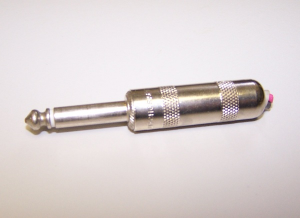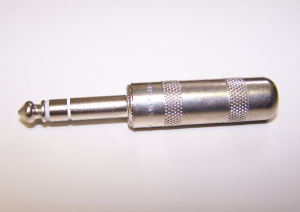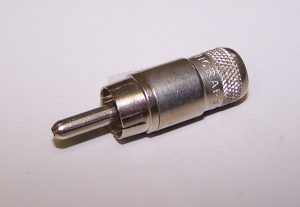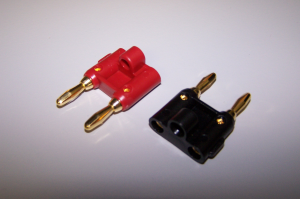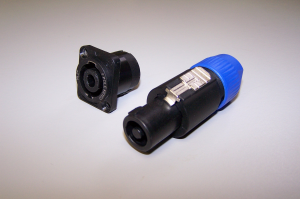Audio Connectors – The Basics
There are many different types of audio connectors used by musicians today. We will only cover the most popular here in our Audio Connector Basics page. As a musician you should understand that there are “cheap” connectors, and there are “not so cheap” connectors. The cheaper audio connectors will not last as long as the higher quality types.
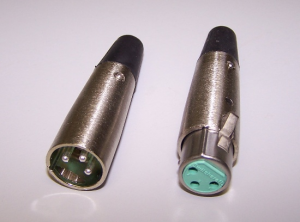
Audio connectors are also wired up according to polarity, and whether or not it is being used in a “Balanced” connection or an “Unbalanced” connection – see our Balanced / UnBalanced Page – CLICK HERE! for more information.
Speaker connectors will be wired up according to polarity – see our Speaker Test and Polarity Page – CLICK HERE! for more information.
Audio Connectors
Below are the most common audio connectors you will come across as a musician.
¼” Mono
Used for guitar, bass, speaker, and patch cables.
¼” Stereo
Also called TRS (Tip, Ring, Sleeve). Used for patch cables, headphones.
XLR’s
Used for Microphone cables, patch cables. Also called Cannon Plugs.
RCA’s
Used for patch cables, CD / DVD player cables, and cassette players.
 |
CHECK OUT OUR NEW “TECHNICAL” PUBLICATIONS NOW! |
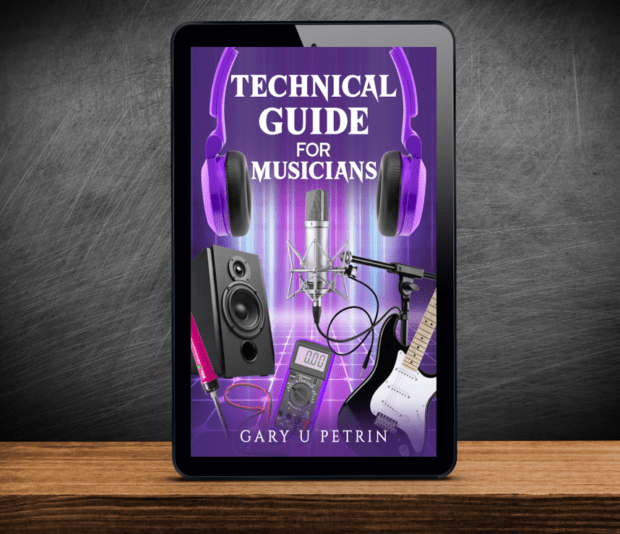 |
1/8” Stereo (3.5mm)
Used for patch cables, ipods, iphones, headphones, mini recording devices, MP3 players, etc.
Banana
Used mainly for speaker cables, and test equipment.
Speakon
Made famous by Neutrik. For speaker connections. The (+) and (-) connections are marked – It has a marking on the connector ( 1+ ) which means that pin #1 is (+), so that would obviously make pin #2 (-).
What is Polarity?
Polarity refers to the position of the “positive or hot” (+) and the “negative or common” (–) signals in an audio system. It is the part of the signal (waveform) that is currently “active.” Connectors will designate which pin is “hot” and which is “common” and some connectors will also designate “ground” (where the shield wire should connect). Speakers will usually have red and black connectors (or markings, dots) on them to designate polarity.
Check out our Speaker Test and Polarity Page – HERE!
A poorly soldered connector can cause a “short” to occur. A “cold” solder joint can cause an “open” to occur (and other intermittent types of problems). For example: If you solder a ¼” mono connector and use it for a speaker connection, and you put too much solder – the (+) connection may now be touching the ( – ) connection. This is considered a “short.” If you plug this “shorted” connector into the back of an amplifier you are basically going to “short out” the output of the amplifier. This can cause the amplifier to overheat, and possibly smoke / burn up. Take the time to learn and understand audio connector basics and polarity. It could save you a lot of time and money in the long run…
This web page containing Audio Connectors is only intended to explain the basic connectors and applications. The more time you spend working with the many different audio connectors will greatly improve your audio knowledge and expertise.

